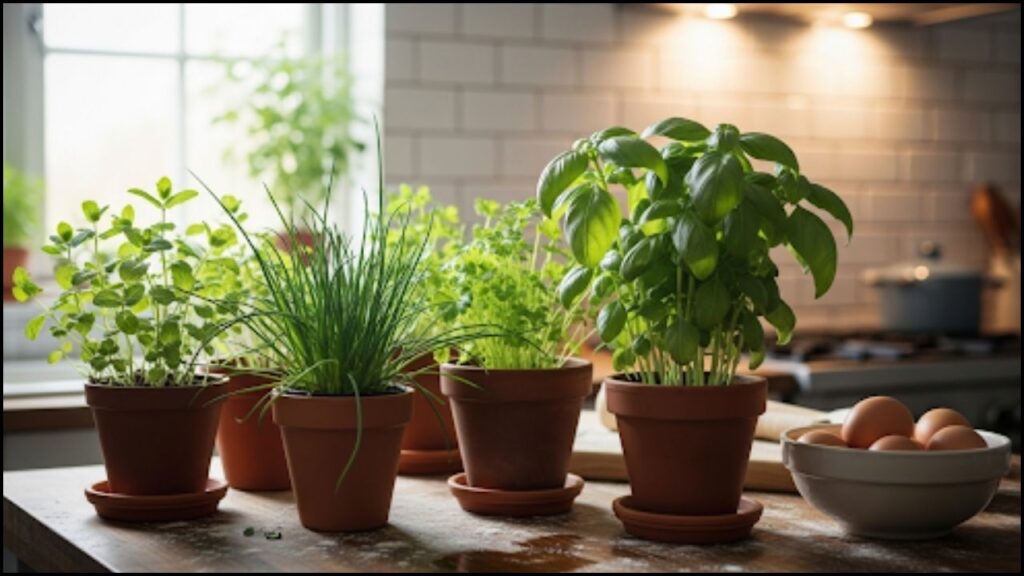In a world of increasing urbanization and limited access to outdoor green spaces, indoor gardening has emerged as a practical solution for cultivating fresh produce. A key challenge for many aspiring indoor gardeners is a lack of direct sunlight. While most herbs require ample sun exposure, a growing body of research and horticultural practice points to a variety of unique low-light edible herbs that can thrive with minimal natural or artificial light. This development provides new opportunities for individuals in apartments, offices, and homes with limited sunny window sills.

Overcoming the Light Barrier: The Science of Shade-Tolerant Plants
Plants rely on photosynthesis, the process of converting light energy into chemical energy, to grow. However, certain species have evolved to thrive in the understory of forests or other shaded environments. These plants often possess larger, thinner leaves to maximize light absorption and can carry out photosynthesis at lower light intensities. This biological adaptation is what allows specific herbs to flourish without direct sun.
Dr. Anya Sharma, a senior fellow at the Brookings Institution and a leading expert in sustainable urban agriculture, states, “The assumption that all edible plants need six to eight hours of direct sunlight is a significant barrier for many. By understanding the specific needs of shade-tolerant herbs, we can democratize access to fresh, homegrown food, regardless of living situation.”
Six Versatile Herbs for Shaded Indoor Environments
Here are six low-light edible herbs that have shown a remarkable ability to grow successfully in conditions where other plants would fail.
Mint (Mentha species)
Mint is a highly resilient and fast-growing herb known for its adaptability. It prefers moist soil and partial shade, making it an excellent candidate for indoor growing away from a direct window. The plant’s vigorous growth can be managed by regular pruning, and it is best grown in its own pot to prevent it from outcompeting other herbs. According to a 2023 study by Cornell University’s Department of Horticulture, varieties such as spearmint and peppermint have shown robust growth patterns with as little as three hours of indirect light per day.
Parsley (Petroselinum crispum)
A biennial plant often grown as an annual, parsley is a staple in many cuisines. While it can handle some sun, parsley tends to bolt (go to seed) more quickly in intense heat and direct light. Indoors, it performs well on an east-facing window sill or in a location with filtered light. The plant’s deep green leaves are a clear indicator of its health, and it requires consistent moisture without becoming waterlogged.

Chives (Allium schoenoprasum)
As a member of the onion family, chives are a perennial herb prized for their mild, onion-like flavor. They are exceptionally hardy and can tolerate a wide range of conditions, including low light. Chives thrive in cooler indoor temperatures and require well-draining soil. Growing them in a pot allows for easy rotation, though they do not strictly need a full-sun location. Their hollow, grass-like leaves can be trimmed with scissors, promoting new growth.
Expanding the Indoor Herb Garden
Beyond the more common varieties, three other herbs provide excellent low-light options, each with unique characteristics and culinary uses.
Lemon Balm (Melissa officinalis)
Known for its bright, citrusy aroma and calming properties, lemon balm is a member of the mint family. Like mint, it prefers indirect light and consistently moist soil. Its fuzzy, heart-shaped leaves can be used for teas, salads, and as a garnish. The plant is relatively easy to care for and can be pruned regularly to maintain its shape and encourage new leaf production.
Cilantro (Coriandrum sativum)
Cilantro is a fast-growing herb that is notorious for “bolting” in hot, sunny conditions, which causes its leaves to become bitter. This characteristic makes it surprisingly well-suited for a cooler, low-light indoor environment where it will produce leaves for a longer period. To ensure a continuous supply, gardeners can plant seeds in succession every two weeks. The key to successful cilantro growth indoors is cool temperatures and consistent, but not excessive, watering.
Thyme (Thymus vulgaris)
While thyme is traditionally a full-sun plant, certain varieties and growing conditions allow it to be successfully cultivated indoors with less light. Creeping or lemon thyme, for instance, can tolerate lower light levels better than common thyme. The plant requires excellent drainage and should be allowed to dry out slightly between waterings. Placing it near a window that gets a few hours of morning sun is ideal, but it can still produce usable leaves in a more shaded environment.
The Future of Indoor Cultivation
The rise of urban living has made efficient use of space a premium, leading to innovations in indoor agriculture. The ability to grow herbs with minimal light not only makes fresh ingredients more accessible but also connects individuals with their food sources in a meaningful way. As researchers continue to explore the genetic and environmental factors that influence plant growth, the list of viable indoor plants is expected to expand.
According to a recent report by the United Nations’ Food and Agriculture Organization (FAO), urban and peri-urban agriculture is a vital component of future food security, providing local and sustainable food sources. This micro-scale gardening trend, which includes the cultivation of low-light edible herbs, aligns with the broader push towards more resilient and localized food systems.
Grow Cilantro Indoors the Easy Way—Fresh Herbs at Your Fingertips 24/7
